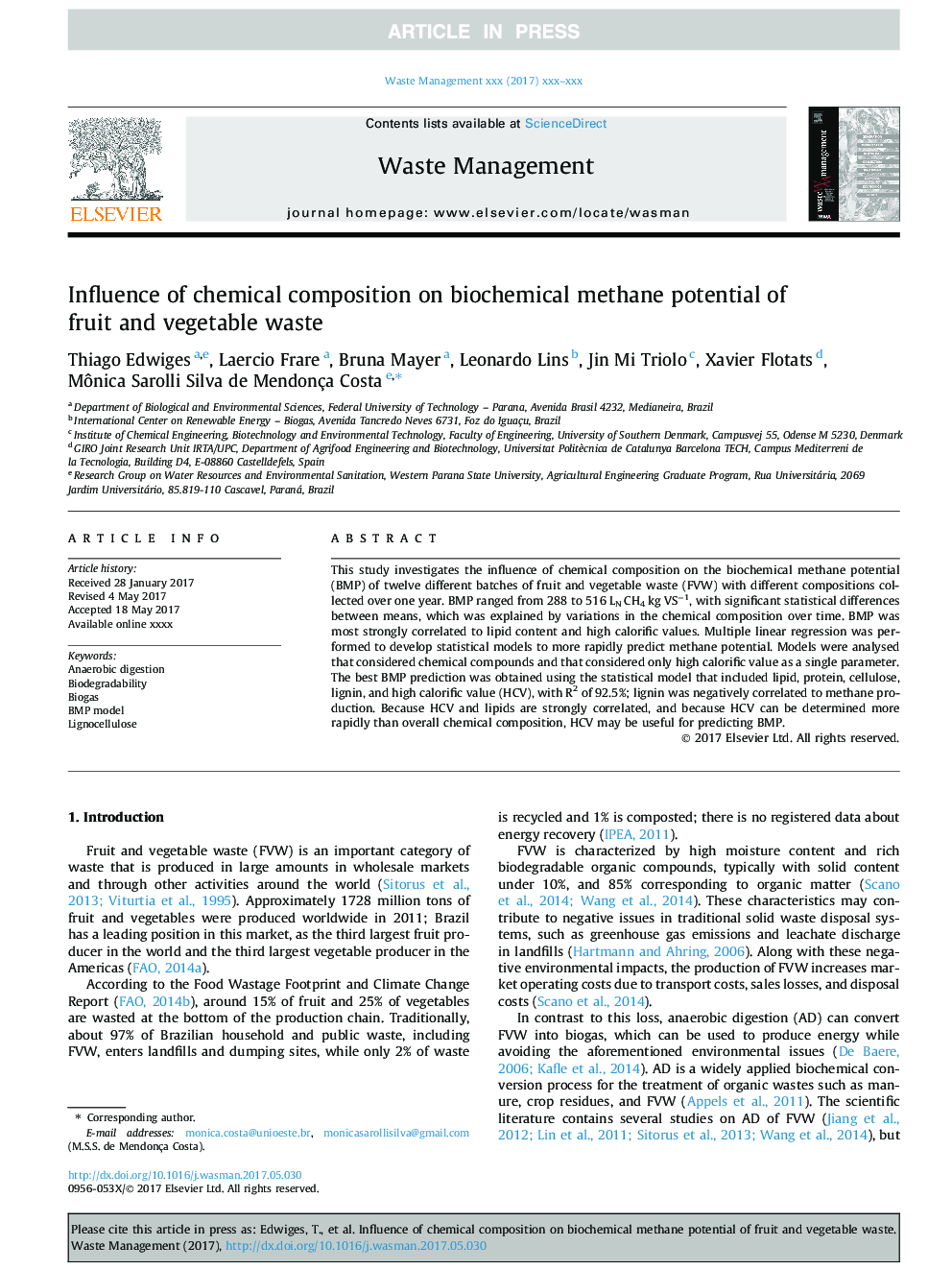| Article ID | Journal | Published Year | Pages | File Type |
|---|---|---|---|---|
| 8870347 | Waste Management | 2018 | 8 Pages |
Abstract
This study investigates the influence of chemical composition on the biochemical methane potential (BMP) of twelve different batches of fruit and vegetable waste (FVW) with different compositions collected over one year. BMP ranged from 288 to 516 LN CH4 kg VSâ1, with significant statistical differences between means, which was explained by variations in the chemical composition over time. BMP was most strongly correlated to lipid content and high calorific values. Multiple linear regression was performed to develop statistical models to more rapidly predict methane potential. Models were analysed that considered chemical compounds and that considered only high calorific value as a single parameter. The best BMP prediction was obtained using the statistical model that included lipid, protein, cellulose, lignin, and high calorific value (HCV), with R2 of 92.5%; lignin was negatively correlated to methane production. Because HCV and lipids are strongly correlated, and because HCV can be determined more rapidly than overall chemical composition, HCV may be useful for predicting BMP.
Related Topics
Physical Sciences and Engineering
Earth and Planetary Sciences
Geotechnical Engineering and Engineering Geology
Authors
Thiago Edwiges, Laercio Frare, Bruna Mayer, Leonardo Lins, Jin Mi Triolo, Xavier Flotats, Mônica Sarolli Silva de Mendonça Costa,
